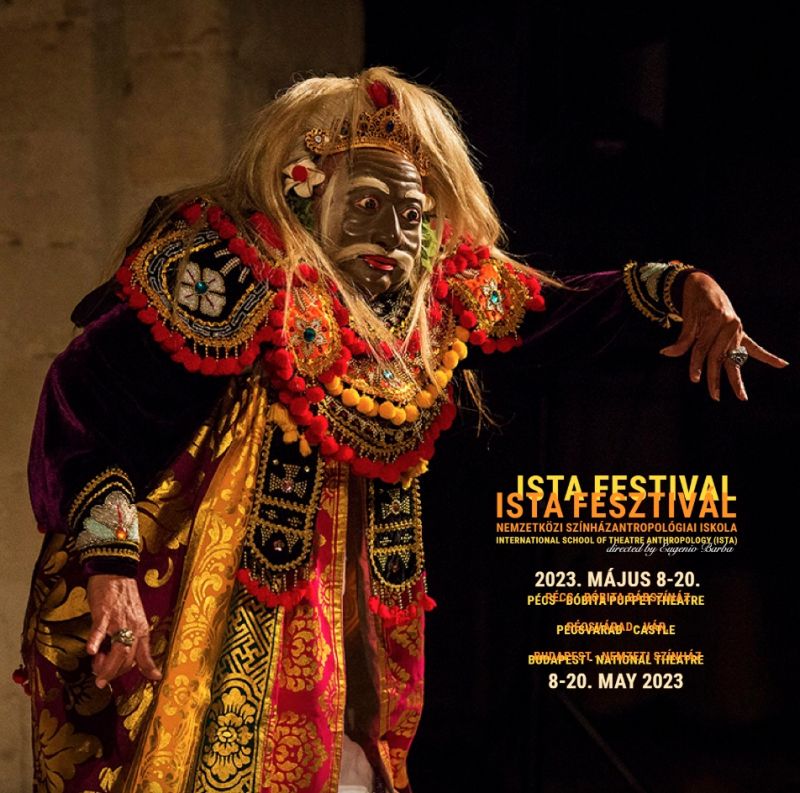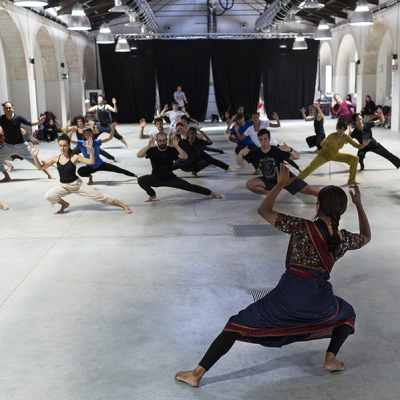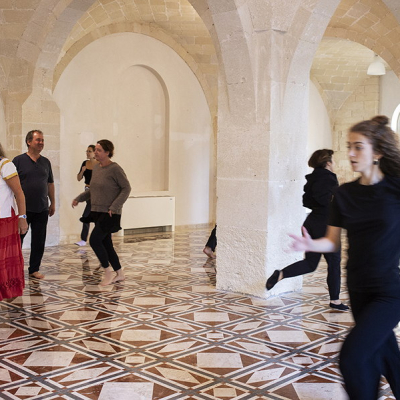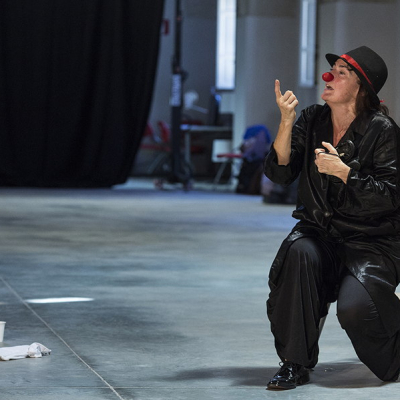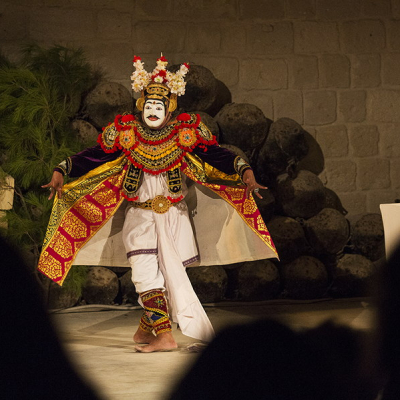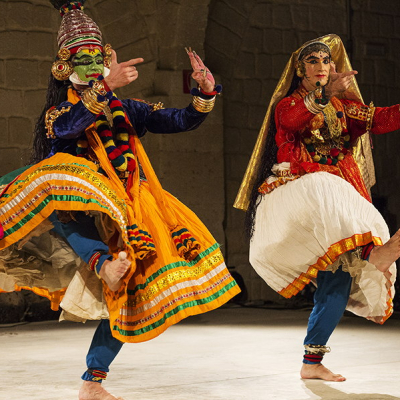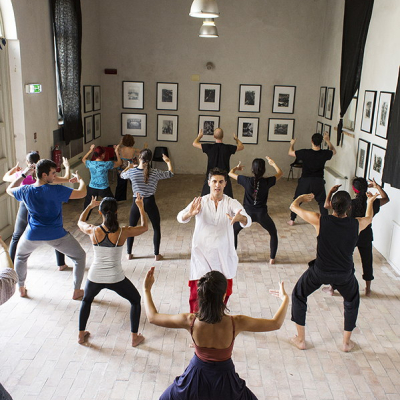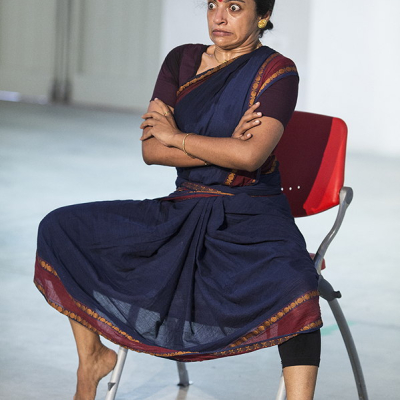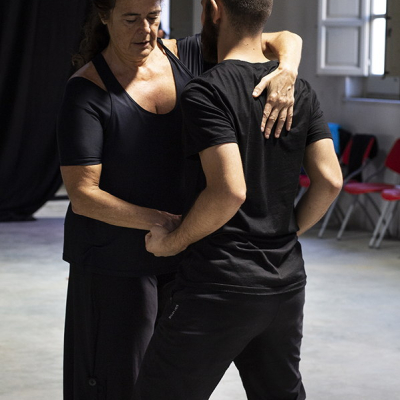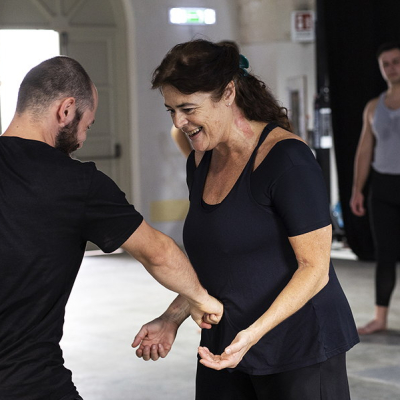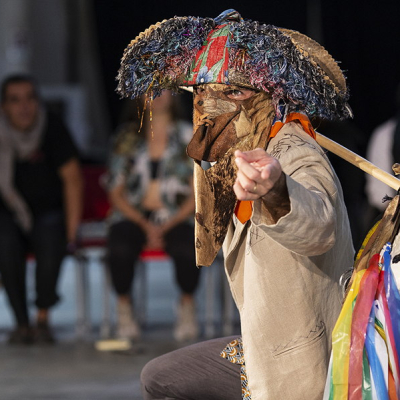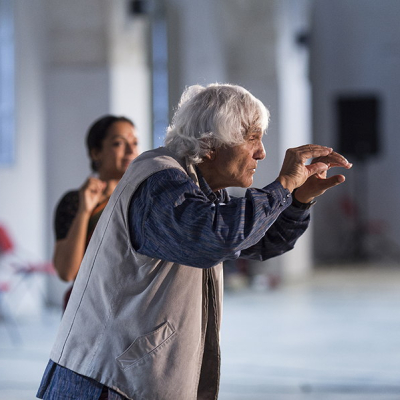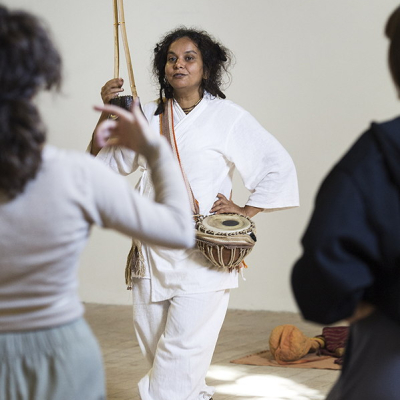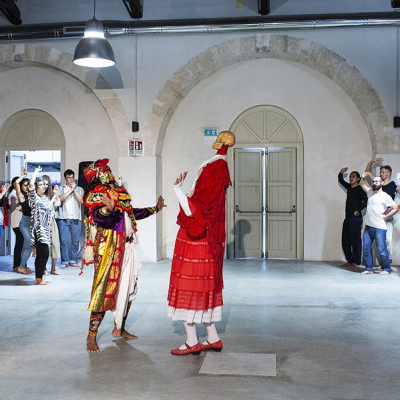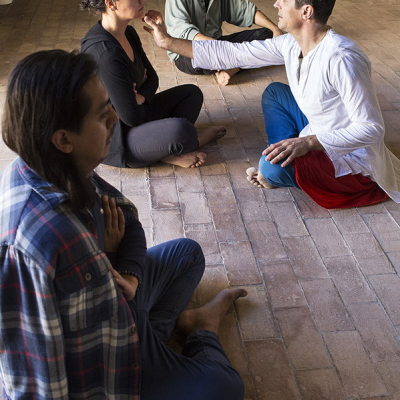Anástasis (Resurrection)
Composed and directed by Eugenio Barba
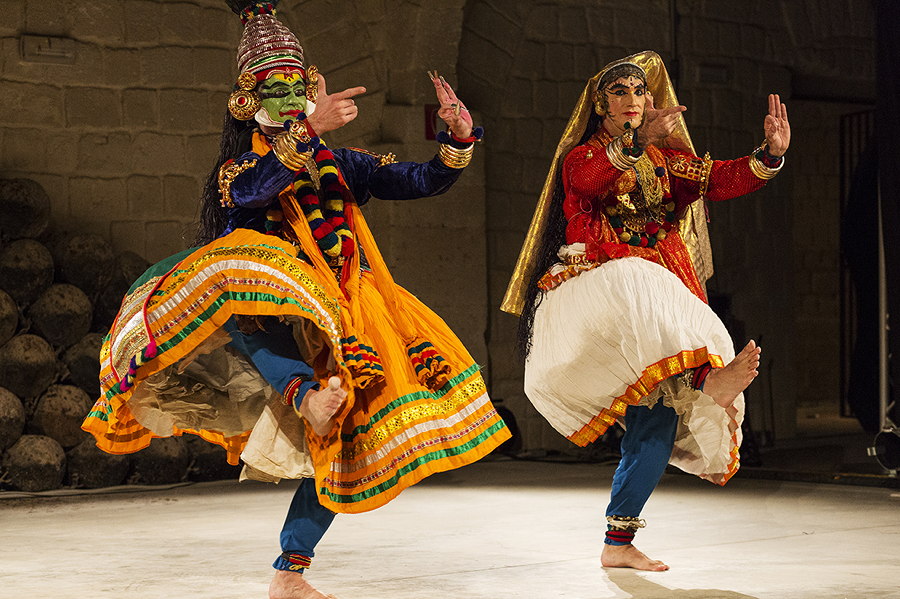
ISTA - International School of Theatre Anthropology presents / Theatrum Mundi Ensemble
Director: Eugenio Barba
1 hours 30 minutes.
Anastasis depicts Life’s different phases and realities from birth to death and again rebirth in the world of nature, animals and humans.
Anastasis is a hymn to the power of Life and an homage to the performer’s art with its splendour of styles and expressions.
It is enacted by performers from different countries and traditions: Japanese noh, Chinese Nankuan opera, Balinese topeng, Indian baul dance and songs as well as kathakali, Brazilian bumba meu boi, flamenco and western contemporary styles.
A performance which gathers artists from various traditions can come about in many ways. The artists can abandon the style of their own tradition and, together with the others, find a common style. Or else, they can assume the style of a foreign tradition in order to give new vigour to the work they are presenting. Greek texts can be interpreted by Japanese actors who draw on noh, and texts by Shakespeare can be played in French by actors who take their inspiration from the scenic skill of kabuki.
With the Theatrum Mundi Ensemble Eugenio Barba follows another principle: each artist faithfully preserves the characteristics specific to his/her own style, integrating them into the context of the various scenes of the story.
Anástasis depicts Life’s different phases and realities from birth to death and again re-birth in the world of nature, animals and humans. Anástasis is a hymn to the power of Life and an homage to the performer’s art with its splendour of styles and expressions. It is enacted by performers from different countries and traditions: Japanese Noh, Chinese Nanguan Opera, Balinese Topeng, Indian Baul and Kathakali, Brazilian Cavalo Marinho and Bumba Meu Boi, Flamenco and western contemporary styles.
Synopsis
- Welcoming the spectators
Two clowns, Mr. Peanut and the Balinese Penasar, lead the spectators to their places. - Introduction
A Transylvanian song in darkness. - Presentation of the performance
Two storytellers, an Indian Baul and a Brazilian folk singer, inform the spectators about the events to happen. - The power of nature
A Japanese woman admires the beauty of the landscape, while Death looms. - The family
A father (Pulcinella), a mother (Nanguan Opera) and a Brazilian child (Cavalo Marinho) play in the intimacy of domestic life. - Human weakness
The Baul storyteller shows the greed of an old man (Balinese Topeng). - Brazilian feast
A group of joyful people celebrates the vitality of a bull. - Showing off bravery
The Brazilian singer and a Hungarian traditional dancer display their virtuosity. - The feast ends
The bull is killed, while the family admires the landscape. - People are hungry…
Two clowns (Bali and Brazil) find the dead bull and carry it out to have a good meal. - … and rich people dance
An elegant couple on stilts waltzes to Johann Strauss’ music. - The boy’s funeral
The parents mourn the dead son. - The face of darkness
An Indian Kathakali demon attempts to annihilate the child’s corpse. - The transformation of Death into Life
The bull and the child resurrect and the performance ends with Death becoming Life, among the actors singing a traditional Hungarian song (“By the river of Tisza under an almond tree / two lovers embrace each other”).
On stage:
Keiin Yoshimura (Japan); I Wayan Bawa (Bali); Parvathy Baul (India); Yalan Lin (Taiwan); Alício Amaral, Juliana Pardo, Rodrigo Lopes dos Reis, Matheus de Aquino (Cia. Mundu Rodá, Brazil); Caterina Scotti, Alessandro Rigoletti, Ricardo Gomes (Teatro tascabile di Bergamo, Italy); Julia Varley, Jakob Nielsen, Antonia Cezara Cioaza (Odin Teatret, Denmark); István Berecz, Ibolya Páli (Hungary); Lorenzo Gleijeses (Teatro di Roma, Italy)
and
Rocío Susana Antero-Cabrera Vites (Peru), Javier Arboleya Rodríguez (Spain), Taylor Ayling (UK), Aurora Bolaffi (Brazil), Viviana Bovino (Italy), Eugenia Cano (Mexico), Benedek Csonka (Hungary), Mark Diaz (USA), Anna Viktória Dömötör (Hungary), Federico Fanella (Italy), Natalia Georgosopoulu (Greece), Daniel Ginebroza (Spain), Gaia Diana Dalia Gulizia (Italy), Sarimé Álvarez Hernández (Cuba/Mexico), Cecilia Hopkins (Argentina), Asmaa Houri (Morocco), Fanis Katechos (Greece), Dominika Laster (Poland/USA), Denis Lavie (France/Spain), Bojan Lazarov (Macedonia), Attila Lestyán (Hungary), So Young Lim (South Korea), Leonardo Mancini (Italy), Ana Patricia Marioli (Argentina/Germany), Natasha Mirny (USA), Manolo Muoio (Italy), Pál Nyáry (Hungary), Lorenzo Ortis Gallo (Italy), Zsófia Pálfi (Hungary), Réka Pável (Hungary), Mirla Pereira (Cuba/USA), Darinka Pilári (Hungary), Ivana Milenović Popović (Serbia), Gisella Rotiroti (Italy), Cecilia Ruiz (Argentina), Karina Russa (Hungary/Venezuela), Natalya Rybalkina (Ukraine), Leo Schmukler (Argentina), Eirini Sfyri (Greece/Spain), Anna Somogyi (Hungary), Hal-Jun Sung (Taiwan), Nadine Szakács (Hungary), Natalia Tesone (Argentina), Renee Torres (Venezuela), Mérida Urquía (Cuba/Colombia), Alexis Vandist (Belgium), Kengip Wong (China), Gyan Ros Zimmermann (Ecuador/Chile)
Musicians: Gregorio Amicuzi (Italy), Rachid Bromi (Morocco), Linda Cunningham (Ireland), László Lukács (Hungary), Annada Prasanna Pattanaik (India), Rina Skeel (Denmark), So Sugiura (Japan)
Soundscape: Mirto Baliani (Italy)
Digital scenography and light design: Stefano Di Buduo (Italy-Germany)
Stage manager: Manolo Muoio (Italy)
Film documentation: Claudio Coloberti (Italy)
Photographs: Francesco Galli (Italy)
Programme text: Leonardo Mancini
Assistants: Gregorio Amicuzi (Italy/Spain), Viviana Bovino (Italy/Spain), Antonia Cezara Cioaza (Romania/Denmark), Ricardo Gomes (Brazil), Leonardo Mancini (Italy), Jakob Nielsen (Denmark), Francesca Romana Rietti (Italy)
Director assistants: Rina Skeel (Denmark-Argentina), Julia Varley (Denmark-Italy), Ana Woolf (Argentina)
Composed and directed by: Eugenio Barba
In collaboration with Teatro di Roma
Eugenio Barba


